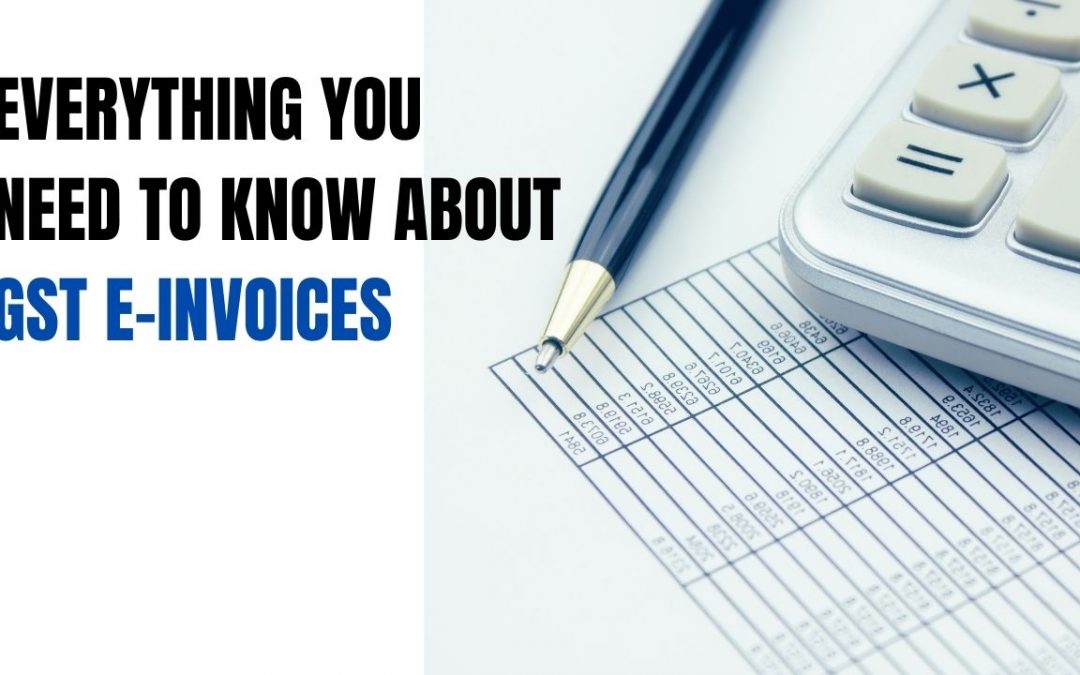What is an e-invoice and an e-invoice under GST?
E-invoices, often known as electronic invoicing, is a GST-compliant electronic authentication technique. All B2B and export invoices generated by a business must be registered with the government system, the Invoice Registration Portal (IRP), and each invoice must be assigned a unique identification number called an Invoice Reference Number (IRN). In addition to IRN, the IRP will create a digitally signed QR code with selected invoice details and digitally sign the invoice data that is provided. As a result, an e-invoice is a document that contains an IRN and a digitally signed QR code printed on it.
After an IRN has been generated and an invoice has been authenticated, the details of the invoice must be made available on the GST and EWB portals.
Who requires the creation of an E-Invoices?
Based on AATO (Aggregate Annual Turnover):
E-Invoice has been gradually introduced in the country, based on the companies’ aggregate annual turnover. On October 1, 2020, the first phase went live for companies with a turnover of more than Rs.500 crore. On January 1, 2021, the second phase went live for enterprises with a turnover of more than Rs.100CR.
On the basis of the fiscal year:
AATO in any preceding Financial Year from 2017-18 onwards must be evaluated to determine the applicability of the E-Invoicing obligation, according to Not. No. 13/2020, as amended by Not. No. 70/2020 and Not. No. 88/2020. The AATO is calculated based on GST returns. On the E-Invoice Portal, the GST System has also made it possible to examine the applicability.
Based on the Entity Type:
Suppliers are the only ones who can generate an e-invoice. E-Invoices cannot be generated by recipients or transporters. On behalf of the sellers on their platforms, e-commerce operators can generate e-invoices. E-Invoicing is something that E-commerce operators should be aware of.
Who doesn’t need to create E-Invoices?
According to GST notification No. 13/2020-Central Tax dated March 21, 2020, the following individuals are exempt from issuing e-invoices:
- Company that provides insurance.
- A financial institution.
- Financial establishment.
- NBFCs.
- GTA.
- Passenger transportation service provider.
- Admission to the screening of cinematograph films in multiplex screens is provided by a service provider.
What kind of documents must be reported to the GST system as part of the E-Invoicing process?
The following papers must be reported to the e-invoice system by the taxpayers.
- Supplier’s invoice.
- Supplier’s Credit Note
- Supplier’s Debit Note
As a result, E-Invoicing does not require the reporting of Bills of Supply and Delivery Challan/Job Work Challan.
How can I create E-invoices (electronic invoice)?
The taxpayer’s system generates an invoice, which is subsequently transmitted to the Invoice Registration Portal (IRP) for approval. The invoice data is updated with IRPs digital signature and a QR Code, as well as the Invoice Registration Number, once it has been authorised (IRN). An E-Invoice is what this is called.
What should an e-invoice receiver look for?
The extra-information relating to invoice reference number will now be included in the e-invoices received from suppliers (to whom the mandate applies) (IRN). As a result, recipients of e-invoices must be aware of the mandate’s applicability to their vendor list. Not only that, but the receivers must also know ahead of time the documents they will get.
What influence will e-invoicing have on the procurement cycle?
As a recipient of standard e-invoices, the accounting systems can now automate the recording of purchase invoices, resulting in increased efficiency and accuracy of data in source systems. Furthermore, because IRN is unique to each invoice, it might be useful for identifying similar invoices and hence for reconciliation.
Under the new e-invoicing system, all business to business (B2B) invoices will get electronically authenticated by GSTN. As done in the past, all businesses will continue to generate invoices on their respective ERP.



